第 9 讲三维标注与公差
目录
1 目标 ..................................................................................................................................................................... 2
2 从文件中获取标注集 ......................................................................................................................................... 3
2.1 获取文件 ................................................................................................................................................. 3
2.2 获取 TPS 文件 ......................................................................................................................................... 4
2.3 获取标注集 ............................................................................................................................................. 4
2.4 遍历标注集 ............................................................................................................................................. 4
2.5 遍历一个标注集中的各公差 ................................................................................................................. 5
2.6 获取公差的语义、关联的几何、公差带、尺寸界限 .......................................................................... 5
3 从标注获取几何元素并将其高亮 ..................................................................................................................... 6
4 从选择的注释获取 TTRS .................................................................................................................................... 7
5 分析标注 ........................................................................................................................................................... 10
5.1 分析公差语义 ....................................................................................................................................... 10
5.2 分析与公差关联的几何元素 ............................................................................................................... 16
5.3 分析公差带 ........................................................................................................................................... 17
5.4 分析尺寸界限 ....................................................................................................................................... 18
6 创建标注 ........................................................................................................................................................... 22
6.1 在选定的平面上创建标注的时候采用的状态机 ................................................................................ 22
6.2 命令代理设置 ....................................................................................................................................... 22
6.3 开始创建标注 ....................................................................................................................................... 23
6.4 获取选择的几何体 ............................................................................................................................... 23
6.5 修改文本的位置 ................................................................................................................................... 24
6.6 修改文本的尺寸和字体 ....................................................................................................................... 24
6.7 修改文本内容 ....................................................................................................................................... 25
7 源代码使用方法 ............................................................................................................................................... 27
�
1 目标
创建标注
获取标注的信息
从标注中获取与之相关联的几何元素
�
从选取的几何元素获取与之关联的标注与公差
使用科技产品规范(TPS)接口。用例演示了 CATITPS 接口使用检索功能引用的一个 3d 注释。它还演示了如
何扫描竞技场结构 CATITTRS 接口来检索 RGE(参考几何元素)。CATIRGE 和 CATIRGETopology 接口用于
检索拓扑几何学的单元。最后,几何和拓扑评估执行创建和显示一个网格点与他们正常的单元。
2 从文件中获取标注集
2.1 获取文件
intAbstractEteamDlg::AbstractAll()
{
CATDocument* pCurDoc = BITFindCurrentDoc();
CATDocument* pDoc = pCurDoc;
�
char * TextPath="E:\\ooo.txt";
FILE * pStream = fopen(TextPath, "w");
if ( pStream == NULL ) return (7);
// Write copyright in stream
fprintf(pStream, "%s\n","COPYRIGHT DASSAULT SYSTEMES 2000");
HRESULT rc = E_FAIL;
2.2 获取 TPS 文件
// Retrieve TPS entry point interface on document//获取文件中 TPS 进入接口??
CATITPSDocument * piTPSDoc = NULL;
if ( pDoc )
{
rc = pDoc ->QueryInterface (IID_CATITPSDocument, (void**) &piTPSDoc);
}
if ( FAILED(rc) ) return (8);
2.3 获取标注集
// Retrieve list of tolerancing sets in document as a CATITPSList//获取文件中的标注集们??
CATITPSList * piSetList = NULL;
rc = piTPSDoc ->GetSets(&piSetList);
piTPSDoc -> Release();
piTPSDoc = NULL;
if (!SUCCEEDED(rc) ) return 7;
// Retrieve set count//获取标注集的数量
unsignedintSetCount = 0;
piSetList -> Count(&SetCount);
// Iterate on list of set and for each set analyze tolerances//遍历每个标注集并分析公差
CATITPSSet* piSet = NULL;
2.4 遍历标注集
for( unsigned intSetIdx = 0; SetIdxItem (SetIdx, &piCompOnSet);
if ( !SUCCEEDED(rc) ) continue;
�
// Analyze sets of piTPSDoc 分析文件中的标注集们
rc = piCompOnSet ->QueryInterface(IID_CATITPSSet, (void **)&piSet);
if ( !SUCCEEDED(rc) ) continue;
// Retrieve tolerances that belong to set as a CATITPSList//获取一个标注集中的公差,公差以 CATITPSList
存储
CATITPSList* piToleList = NULL;
rc = piSet ->GetTPSs(&piToleList);
if ( !SUCCEEDED(rc) ) continue;
// Retrieve tolerances count in set//获取一个标注集中的公差数量
unsignedintToleCount = 0;
piToleList -> Count(&ToleCount);
2.5 遍历一个标注集中的各公差
// Analyze tolerances of set//分析标注集中的公差
for ( unsigned intToleIdx = 0; ToleIdx Item (ToleIdx, &piCompOnTole);
if ( !SUCCEEDED(rc) ) continue;
fprintf (pStream,"%s%s%i%s%i%s\n",
"------------------------ ",
" Set.", SetIdx,".Tolerance.",ToleIdx,
" -----------------------");
2.6 获取公差的语义、关联的几何、公差带、尺寸界限
// Dump tolerance informations//获取公差信息
CAATpiDumpCATITPSSemanticValidity (piCompOnTole, pStream);
CAATpiDumpCATITPS (piCompOnTole, pStream);
CAATpiDumpCATITPSToleranceZone (piCompOnTole, pStream);
CAATpiDumpCATITPSDimensionLimits (piCompOnTole, pStream);
HighLAllAnn
PointLineFace
piCompOnTole -> Release();
}
}
piSetList -> Release();
// Close output dump file
fclose(pStream);
(piCompOnTole);//高亮全部标注...OK
(piCompOnTole);//高亮全部与标注相关的点、线、面
�
return (0);
}
3 从标注获取几何元素并将其高亮
CATFrmEditor *pEditor=CATFrmEditor::GetCurrentEditor();
CATPathElement pUIPath = pEditor->GetUIActiveObject();
CATPathElement * pPathTPS = &pUIPath;
CATHSO * pHSO = pEditor -> GetHSO();
在上边代码中的自定义函数PointLineFace()
//高亮全部与标注相关的点、线、面
void AbstractEteamDlg::PointLineFace(CATITPSComponent * ipiTole)
{
if ( !ipiTole )
{
return;
}
int TTRSNodeCount = 0;
int TTRSSupportCount = 0;
int RGECount = 0;
int FaceCount = 0;
int EdgeCount = 0;
int VertexCount = 0;
// Retrieve CATITPS interface on input tolerance
CATITPS * piTPS = NULL;
HRESULT rc = ipiTole -> QueryInterface (IID_CATITPS, (void **)&piTPS );
if ( SUCCEEDED(rc) )
{
// Links to toleranced surfaces is retrieved as a TTRS list
unsignedint Count = 0;
CATITTRSList * piTTRSList = NULL;
CATITTRS * piTTRS = NULL;
rc = piTPS -> GetTTRS (&piTTRSList);
if ( SUCCEEDED(rc) )
{
// Dump TTRS count
piTTRSList -> Count (&Count);
// Iterate on TTRS list, and for each of them read
for ( unsignedint i = 0; i < Count; i++ )
CAT3DBagRep * pRep = new CAT3DBagRep();
�
{// Retrieve TTRS number i in the list as a CATITTRS
piTTRS = NULL;
rc = piTTRSList -> Item (i, &piTTRS);
if ( SUCCEEDED(rc) )
{
// Analyse TTRS Composition
AnalyseTTRS (piTTRS, pHSO, pPathTPS,
TTRSNodeCount, TTRSSupportCount, RGECount,
FaceCount, EdgeCount, VertexCount, pRep);
// Construct a Rep to visualize TTRS and add it to ISO
//AddTTRSGeometryOnRepresentation (piTTRS, pPathTPS, pRep);
piTTRS -> Release();
piTTRS = NULL;
}
}
piTTRSList -> Release();
}
}
}
4 从选择的注释获取 TTRS
当选择代理 OnAnnotationSelected 称为过渡方法。CATPathElement 选择 pPathTPS 检索通过调用
GetValue 选择代理。选中的 3 d 注释 piTPS 检索作为 CATITPS 接口指针使用 CATPathElement 的搜索方
法 。 方 法 CATITPS:GetTTRS 检 索 的 列 表 竞 技 场 直 接 由 三 维 引 用 注 释 CATITTRSList 接 口 指 针 。
CATITTRSList:: 计 数 和 CATITTRSList:: 条 目 的方法 允 许 列 表上 进 行 迭 代。 检 索 列 表的 每 个 元 素作 为
CATITTRS AnalyseTTRS 接口指针和提供的方法来获取一些信息组成。
booleanCAATpiAccessGeometryCmd::OnAnnotationSelected (void * ipData)
{
if ( !_pSelectionAgent || !_pPanel ) return (TRUE);
HRESULT rc = E_FAIL;
intTTRSNodeCount = 0;
intTTRSSupportCount = 0;
intRGECount = 0;
intFaceCount = 0;
intEdgeCount = 0;
intVertexCount = 0;
�
// Read display parameters from panel
_pPanel ->GetRequiredDisplay (&_bDisplay3DGrid, &_bDisplayTTRSRep);
// Retrieve the path of the selected annotation
CATPathElement * pPathTPS = _pSelectionAgent ->GetValue ();
if ( pPathTPS )
{
// Retrieve HSO from editor and empty it
CATFrmEditor * pEdt = GetEditor();
if ( pEdt )
{
CATHSO * pHSO = pEdt ->GetHSO();
if ( pHSO )
{
pHSO -> Empty();
// Add selected PathElement in the HSO, it will be highlighted
pHSO ->AddElements (pPathTPS);
CATISO * pISO = pEdt ->GetISO();
if ( pISO )
{
// Clean existing element in ISO
pISO ->RemoveElement (_pModelObjectForAdditionalRep);
// Retrieve CATITPS interface on selected 3D annotation
CATITPS * piTPS = NULL;
rc = pPathTPS -> Search (IID_CATITPS, (void**) &piTPS);
if ( SUCCEEDED(rc) )
{
// Retrieve the list of TTRSs which are directly referenced by
// the annotation, most often that list contains only 1 element,
// exeptions are Semantics Targets V5 and Default Annotation
CATITTRSList * piTTRSList = NULL;
rc = piTPS ->GetTTRS (&piTTRSList);
if ( SUCCEEDED(rc) )
{
unsignedintTTRSCount = 0;
piTTRSList -> Count (&TTRSCount);
CATITTRS * piTTRS = NULL;
// Allocate representation to display surfaces of TTRSs
// Points and normals on the TTRSs faces will be
// added in that Rep by AnalyseTTRS method.
�
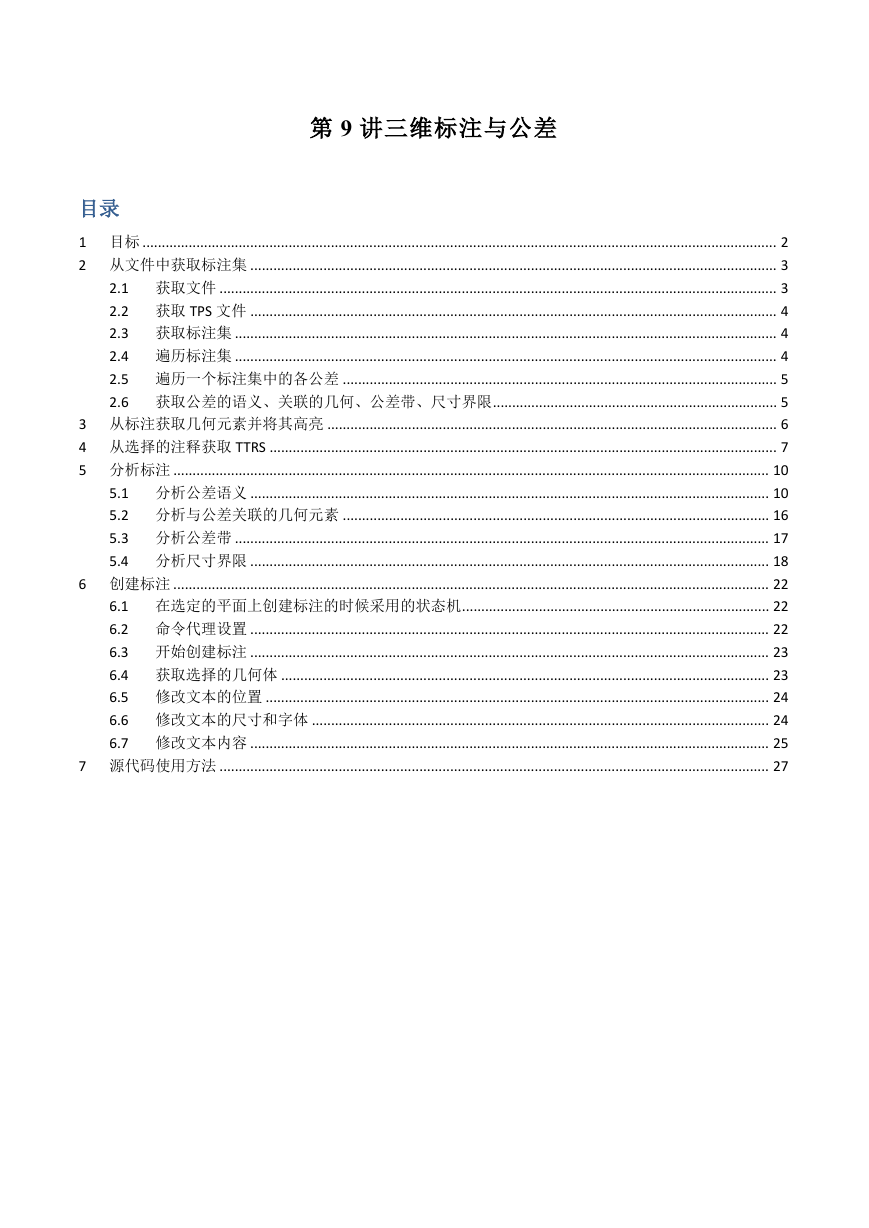
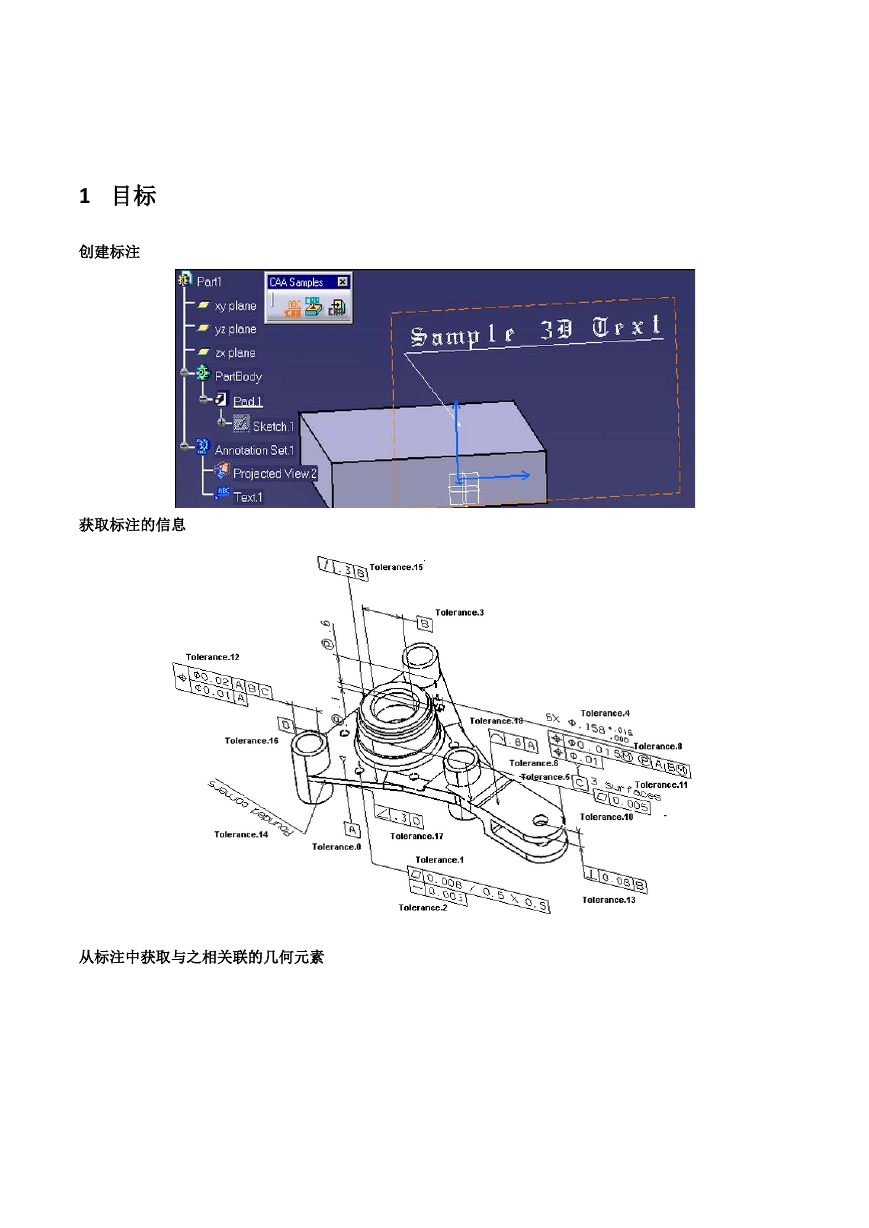
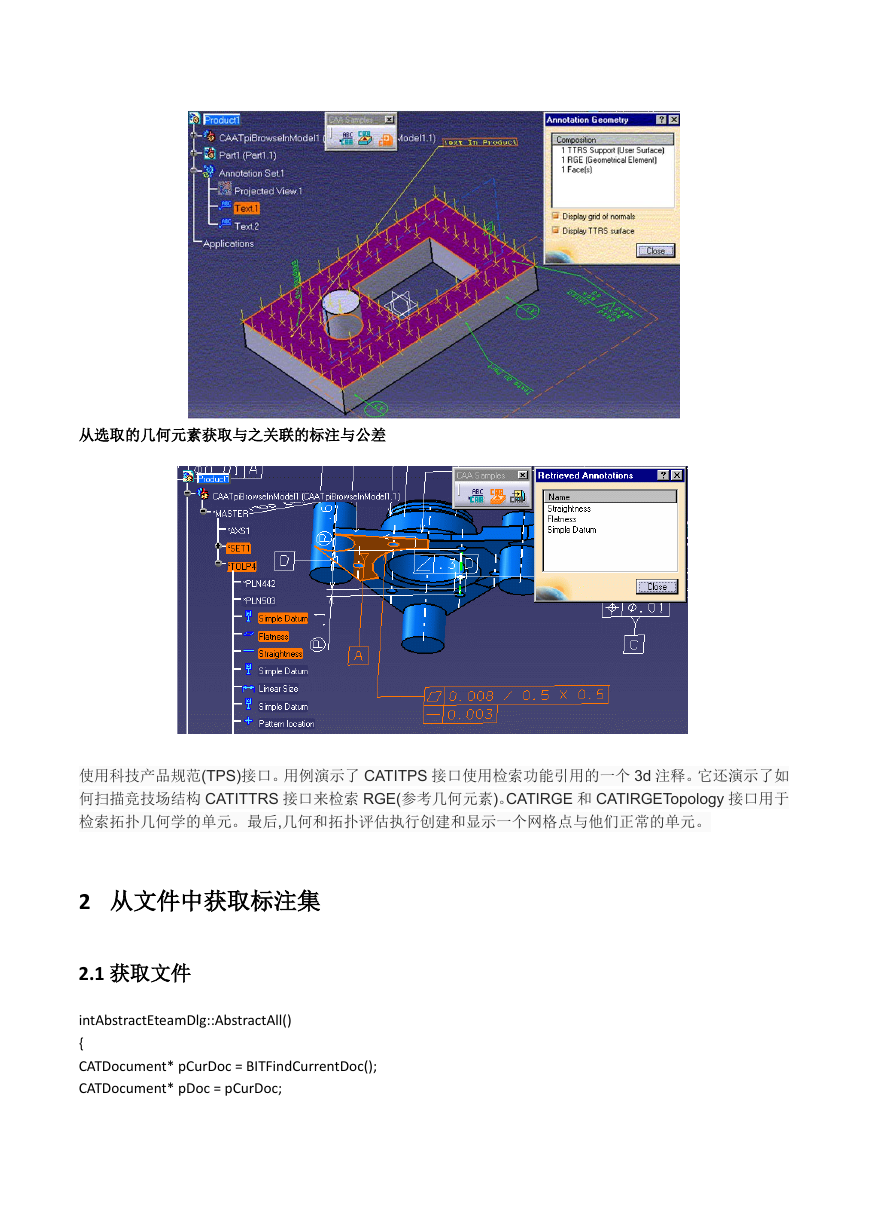
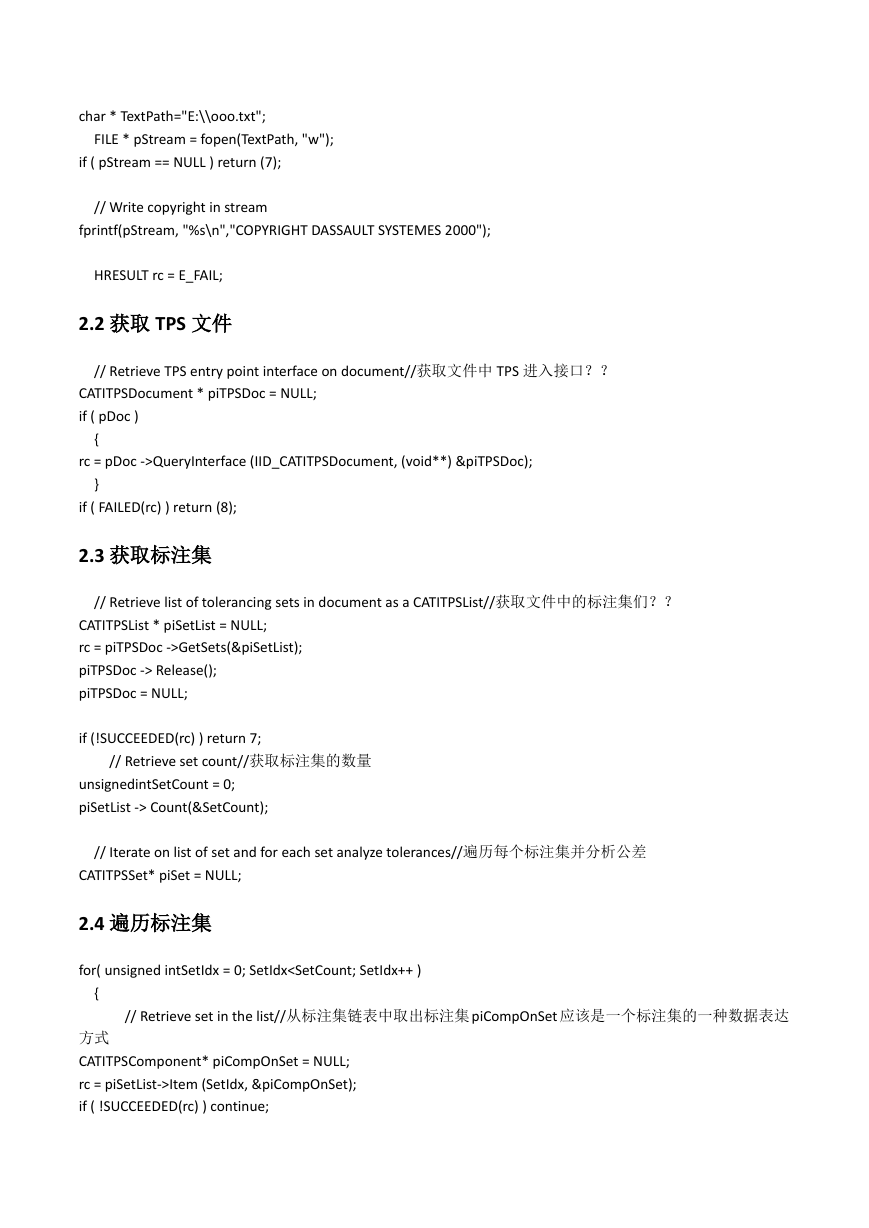
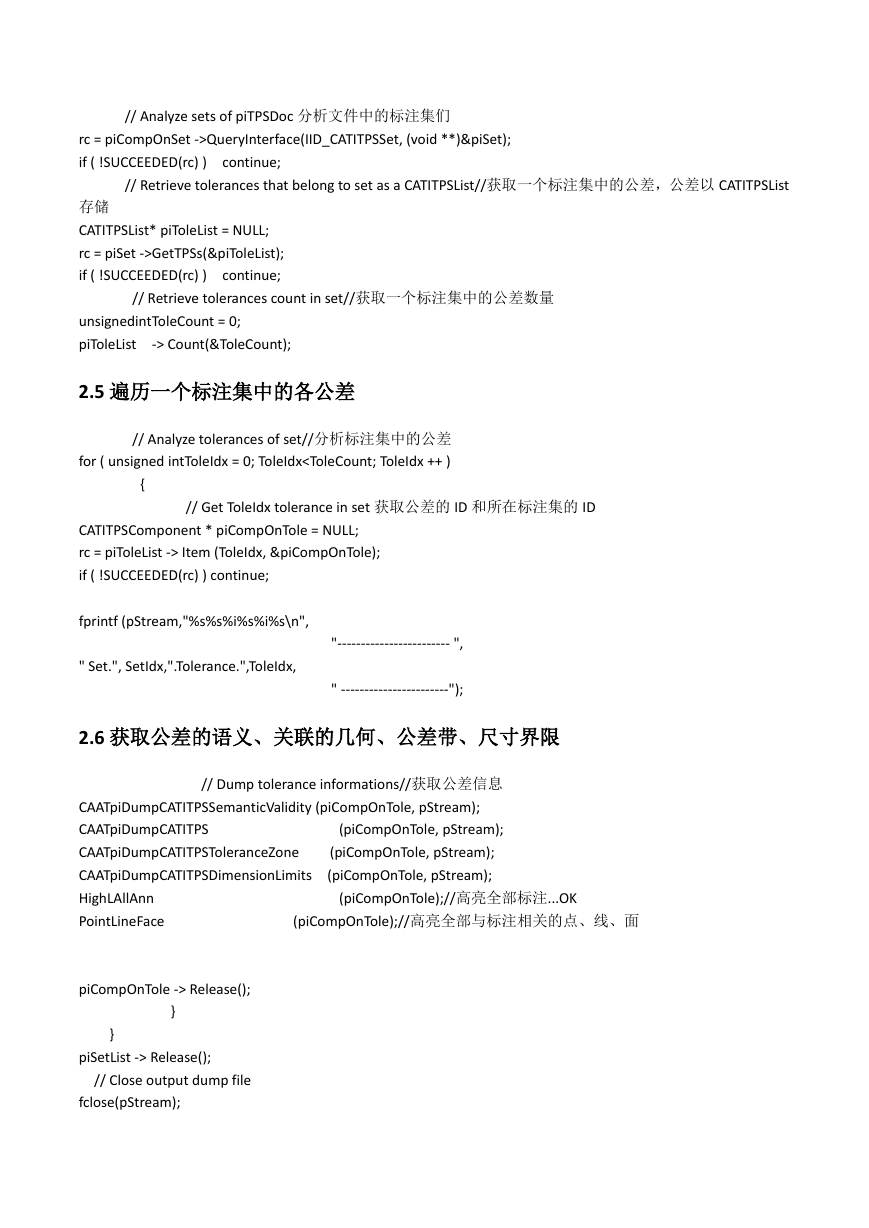
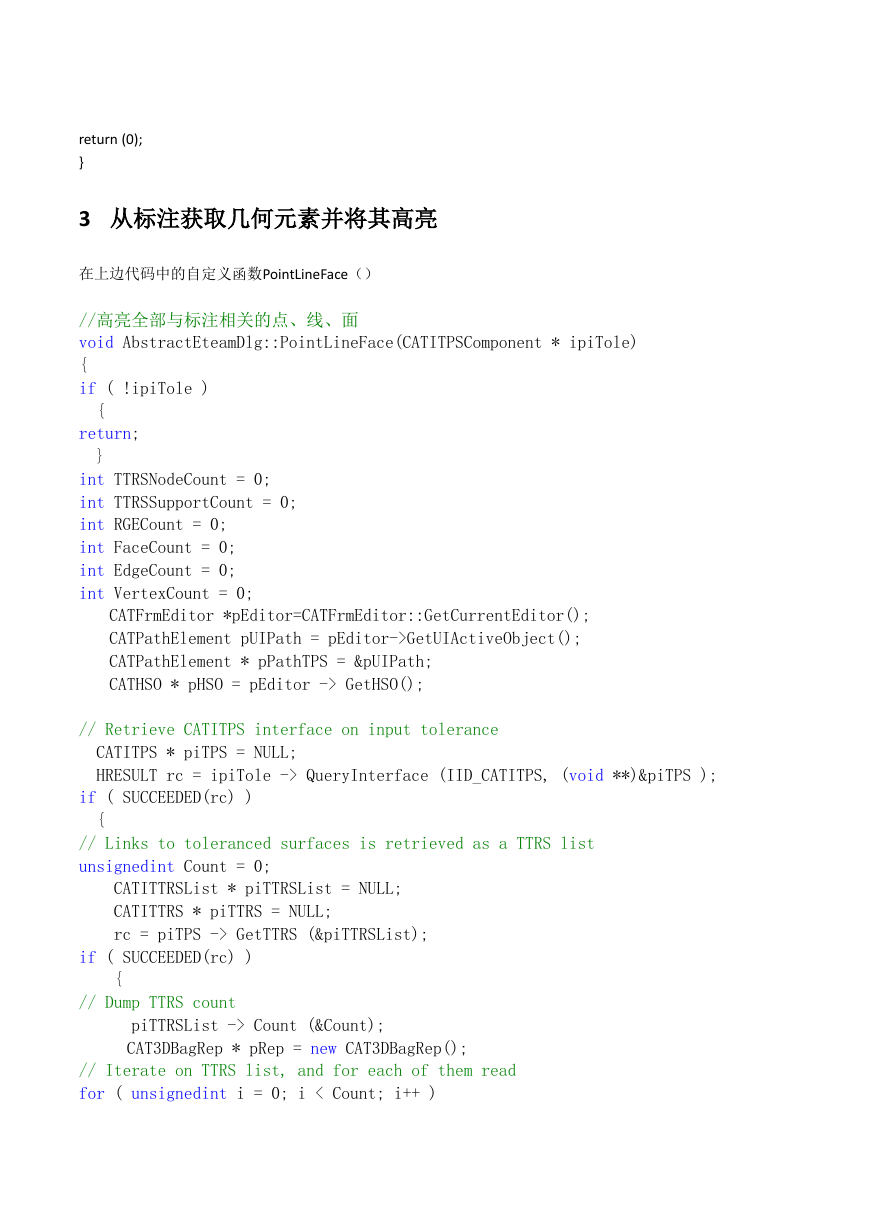
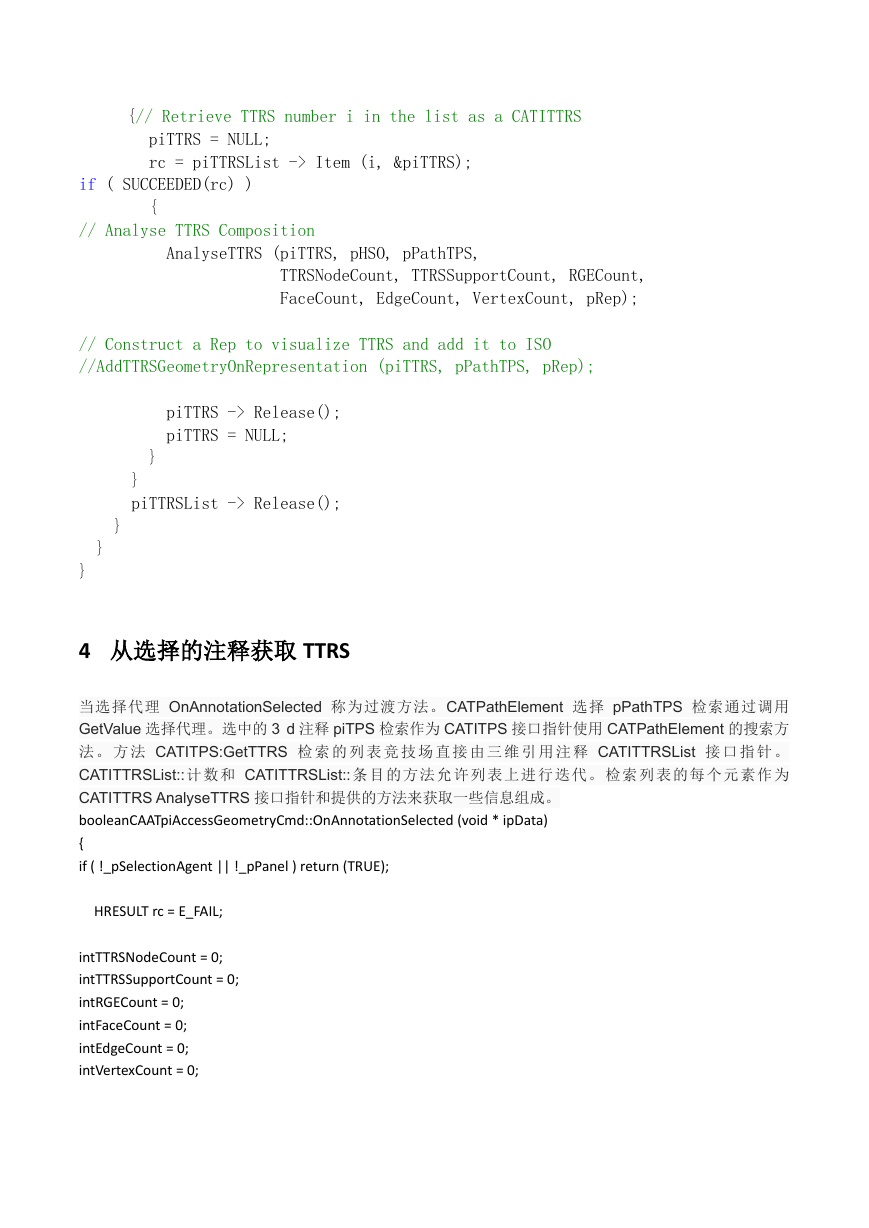
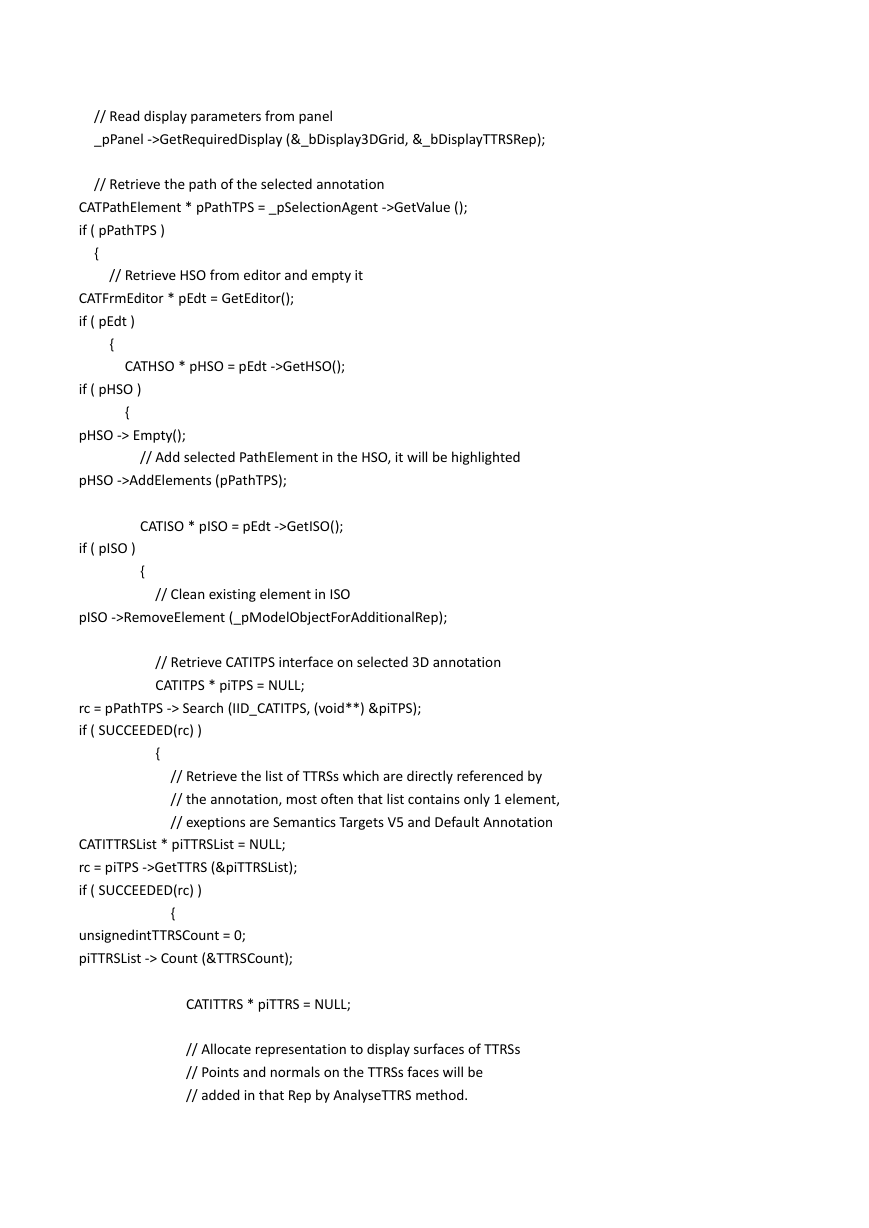








 2023年江西萍乡中考道德与法治真题及答案.doc
2023年江西萍乡中考道德与法治真题及答案.doc 2012年重庆南川中考生物真题及答案.doc
2012年重庆南川中考生物真题及答案.doc 2013年江西师范大学地理学综合及文艺理论基础考研真题.doc
2013年江西师范大学地理学综合及文艺理论基础考研真题.doc 2020年四川甘孜小升初语文真题及答案I卷.doc
2020年四川甘孜小升初语文真题及答案I卷.doc 2020年注册岩土工程师专业基础考试真题及答案.doc
2020年注册岩土工程师专业基础考试真题及答案.doc 2023-2024学年福建省厦门市九年级上学期数学月考试题及答案.doc
2023-2024学年福建省厦门市九年级上学期数学月考试题及答案.doc 2021-2022学年辽宁省沈阳市大东区九年级上学期语文期末试题及答案.doc
2021-2022学年辽宁省沈阳市大东区九年级上学期语文期末试题及答案.doc 2022-2023学年北京东城区初三第一学期物理期末试卷及答案.doc
2022-2023学年北京东城区初三第一学期物理期末试卷及答案.doc 2018上半年江西教师资格初中地理学科知识与教学能力真题及答案.doc
2018上半年江西教师资格初中地理学科知识与教学能力真题及答案.doc 2012年河北国家公务员申论考试真题及答案-省级.doc
2012年河北国家公务员申论考试真题及答案-省级.doc 2020-2021学年江苏省扬州市江都区邵樊片九年级上学期数学第一次质量检测试题及答案.doc
2020-2021学年江苏省扬州市江都区邵樊片九年级上学期数学第一次质量检测试题及答案.doc 2022下半年黑龙江教师资格证中学综合素质真题及答案.doc
2022下半年黑龙江教师资格证中学综合素质真题及答案.doc